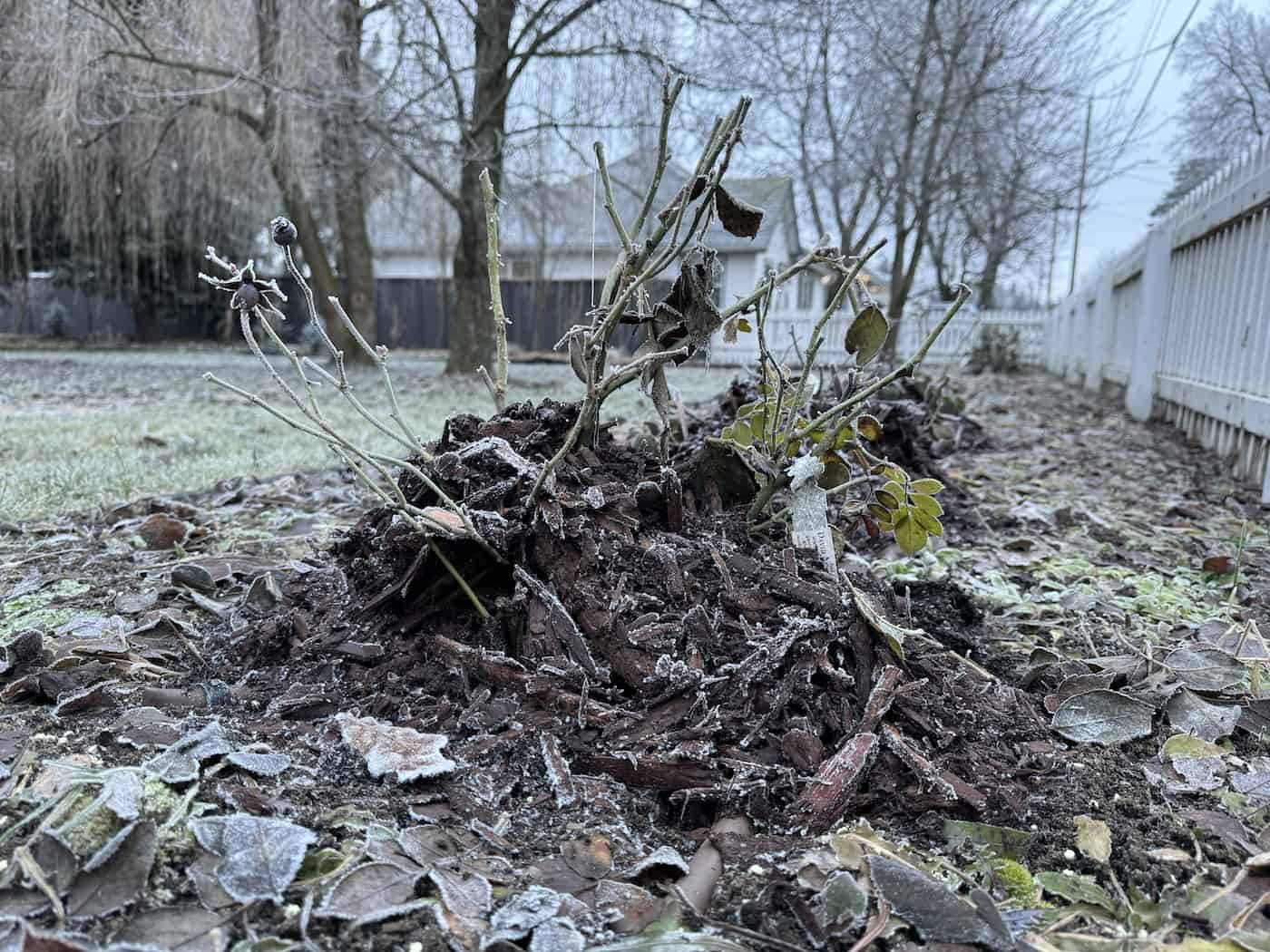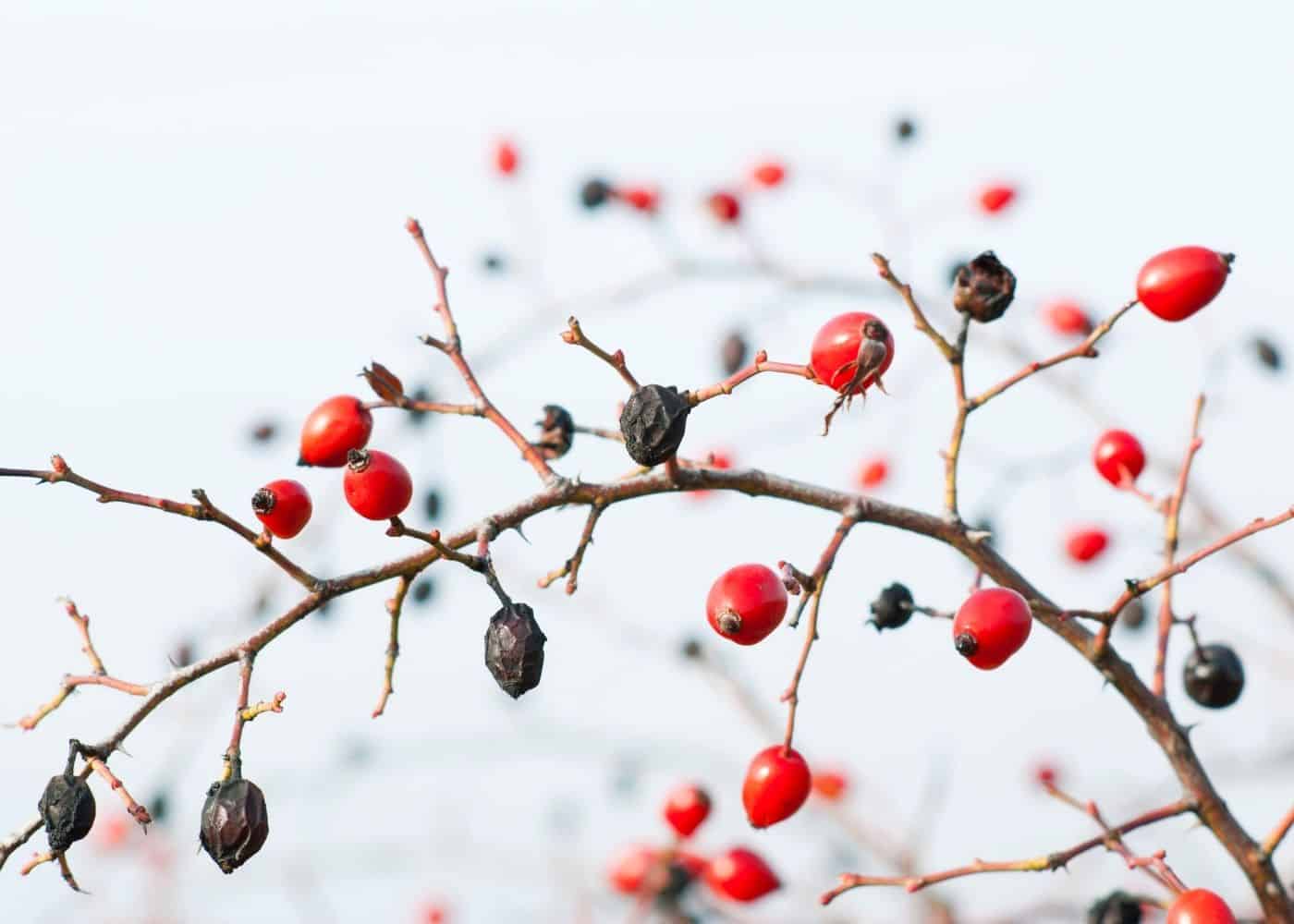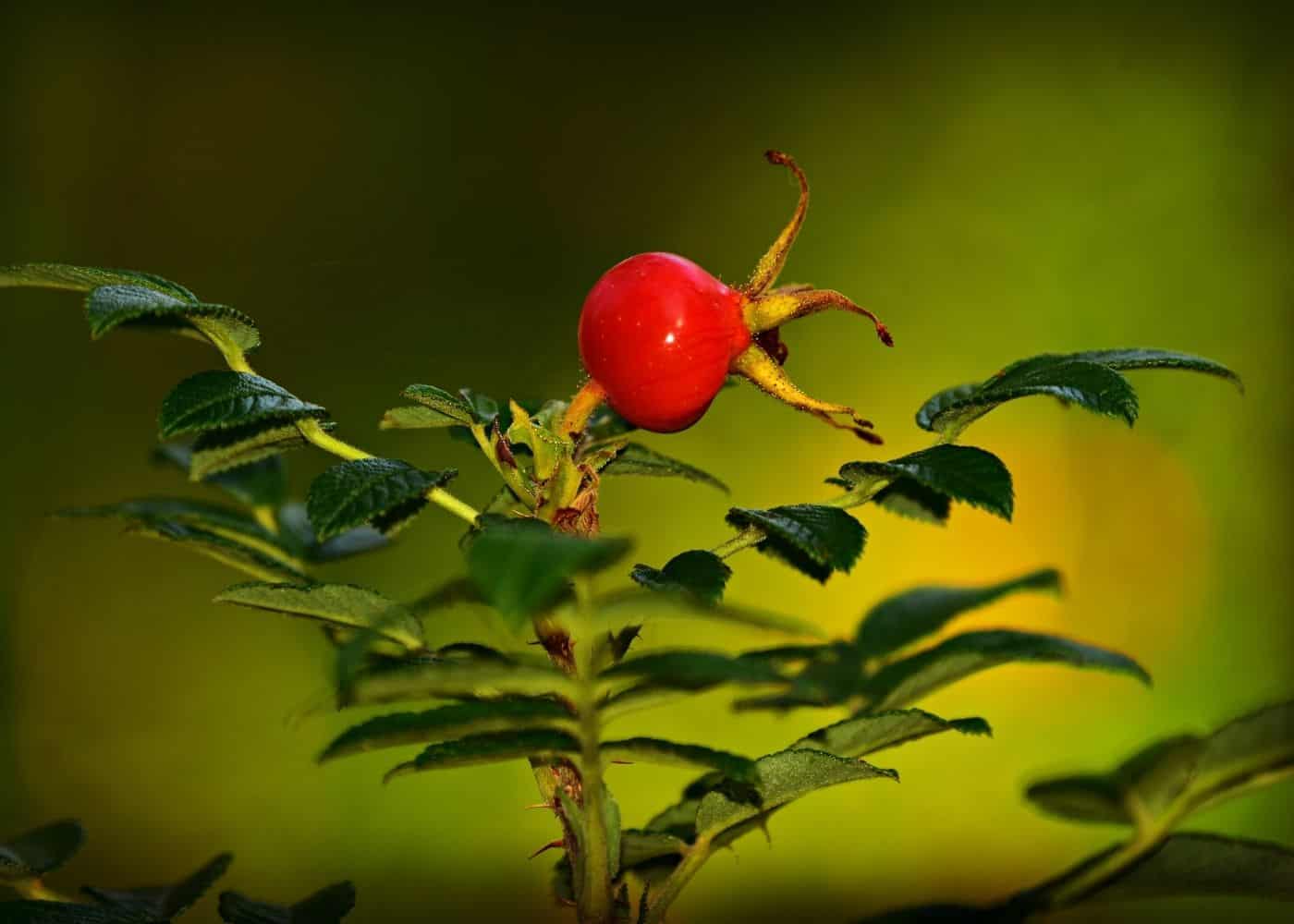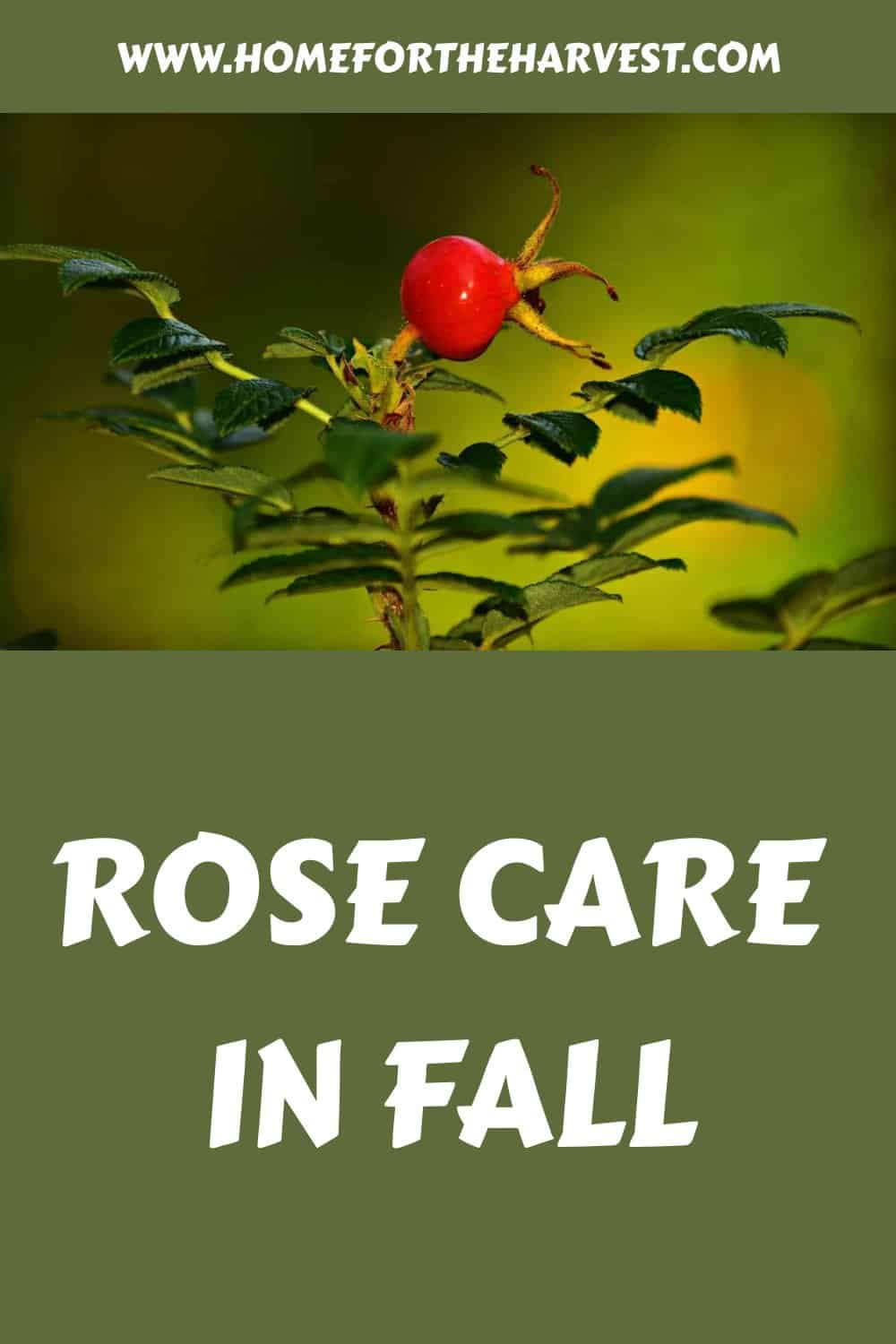Rose care in the fall includes watering regularly, mulching the plants, monitoring for pests and diseases, deadheading spent blooms, raking up fallen leaves, and feeding your roses with a high-quality fertilizer. Pruning roses is generally avoided during the fall, although you can shape the plant and remove dead, damaged, or diseased stems or leaves any time of year. Fall is also a wonderful time to order new rose plants!
Fall rose care basics
As the weather begins to cool and the days grow shorter, you’ll need to take some extra care of your rose plants to ensure they stay healthy through the fall and into the winter. Autumn maintenance tasks are an important part of year-round rose care.
Start with watering the roses regularly in the fall, even as temperatures fall. Roses need 1-2 inches of water per week, and they may need even more during periods of dry weather. A really good indication of dry roses is if their leaves turn yellow. To reduce the chances of this occurring, use a soaker hose or drip irrigation system to water your roses deeply and slowly, which will help reduce the risk of disease.
Fall is also a great time to add mulch. After you’ve raked up the leaves surrounding the plant, take a look at the condition of the mulch. Applying a layer of mulch around your roses will help trap moisture in the soil, protect against temperature fluctuations, and prevent weeds from growing.
Also, take time to watch for pests and diseases. Keep an eye out for any signs of pests or disease, such as wilting foliage, spots or patches on leaves, holes in the plant’s stems, or powdery mildew. If you notice any of these issues, take action quickly to treat the problem and prevent further damage.
Spent blooms can be deadheaded in the early fall. Be sure to use clean clippers or pruners to avoid spreading any diseases. Stop deadheading in September to allow the plant to produce rose hips, which are excellent for winter interest and for garden wildlife. Avoid any significant pruning in the fall, as this can encourage tender young growth that is vulnerable to winter damage.
Roses can also be fed in early fall. Feeding your roses with a high-quality fertilizer that contains all the essential nutrients they need will help keep them healthy and vibrant throughout the fall season and beyond. Look for a formula designed specifically for roses or flowering shrubs, and follow the instructions carefully when applying it to your plants. Avoid fertilizing in mid-late fall or any time that the ground is frozen.
Watering roses in the fall
Roses should be watered deeply in the fall to support the plant as it prepares to store energy in its roots for wintertime. Water roses once a week, giving each plant 1-2 inches of water. If the weather is dry, you may need to water more frequently to ensure the plant has the moisture it needs to enter dormancy in optimal health.
Mulching roses in the fall
Fall is a great time to mulch garden beds, including those with roses. Adding a layer of mulch around your roses in the fall can help trap moisture in the soil, protect against temperature fluctuations, and prevent weeds from growing. A 1″-3″ layer of organic mulch over the soil around the plant is usually sufficient. Good organic mulches available in the fall include homemade compost, arborist wood chips, or shredded leaves.

Gardeners in cold zones may also want to apply a thicker protective wintertime mulch over the base of rose plants. Wait until the ground is frozen to apply wintertime protective mulch around the canes. Once the ground is frozen, mound straw or shredded leaves around the bottom 6″-12″ of the plant. Remove this mulch in the early springtime (around the time roses are pruned).

Pruning roses in the fall
Roses are not generally pruned in the fall. In cooler climates, stop pruning and deadheading roses in September to allow the plant to produce rose hips and store energy in its roots for wintertime. Pruning in autumn can stimulate new branches to grow quickly. These young branches are then vulnerable to winter damage.
While hard pruning is not recommended during the fall, this is a good opportunity to look for and remove any canes or branches that are dead, damaged, diseased, or dying. You can also take the opportunity to lightly shape the plant if desired.
Gardeners in very snowy climates may also want to reduce the overall height of large rose bushes in the fall to remove long slender canes that may bend, break, or deform under heavy snow loads. This is also true for windy climates where taller rose shrubs are vulnerable to wind damage. Taller roses are usually cut back to 4-5 feet in the fall in these areas. You can also thin out the oldest canes in late fall to minimize damage from windthrow.
Fertilizing roses in the fall
Roses are sometimes fed with fertilizer or rose food in early fall. This autumn feeding helps support the plant as it develops rose hips and stores energy in its roots for the coming winter season.
Apply a high-quality fertilizer that contains all the essential nutrients roses need. Be sure to follow the instructions on the fertilizer package when applying it to your plants. Don’t feed your roses in mid-late fall because this can encourage new growth that is vulnerable to winter damage.
Stop fertilizing altogether once the ground is frozen. Generally, it is best to avoid applying any fertilizer to frozen ground.
It’s also important not to over-fertilize your roses. Too much nitrogen in the soil can actually cause problems for roses, such as encouraging excessive growth or preventing flowers from blooming. If you are unsure about how much fertilizer to apply, it is always best to err on the side of caution and use less rather than more.







